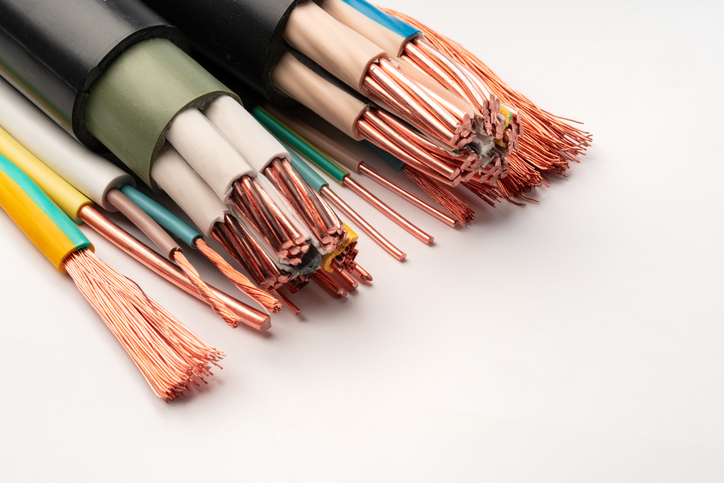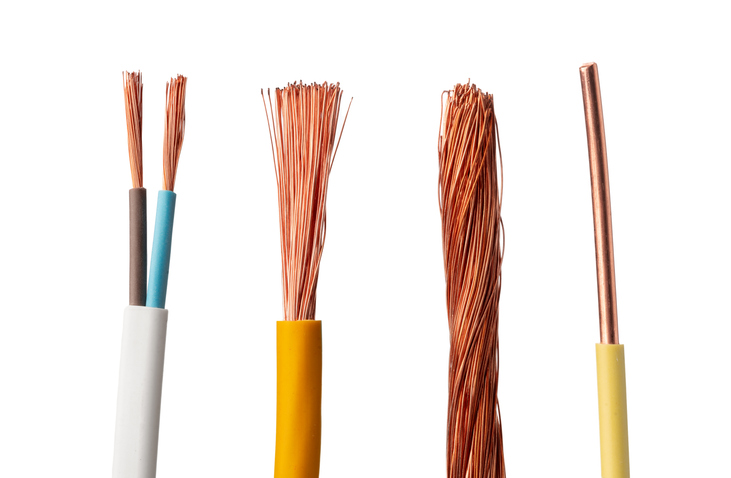Understanding SIS Wire: A Comprehensive Guide
What is SIS Wire?
SIS wire, also referred to as Stranded Insulated Switchboard wire, is a specialized type of insulated electrical wire designed for control and power circuits in switchboards. It consists of stranded copper conductors enveloped in a high-quality, heat-resistant insulation. The primary role of SIS wire is to provide secure and efficient electricity distribution in industrial, commercial, and institutional applications.Key Features of SIS Wire
SIS wire is renowned for its numerous qualities that make it ideal for a variety of electrical applications. Below are its key features:
1. Stranded Copper Conductors: The use of stranded copper conductors makes SIS wire both flexible and durable. This flexibility is especially beneficial for installations in tight or confined spaces, where rigid wires may not perform as well. The stranded design also improves its capacity to carry current efficiently.
2. Heat-Resistant Insulation: One of the defining attributes of SIS wire is its heat-resistant insulation, typically made from cross-linked polyethylene (XLPE). This material is excellent for withstanding high temperatures, making the wire suitable for use in both dry and wet environments. The high thermal resistance is crucial for ensuring long-lasting performance in harsh conditions.
3. Voltage Rating: Most SIS wires are rated for up to 600 volts, which allows for use in a broad range of applications. Whether it’s powering equipment or controlling systems, the wire’s voltage rating ensures reliability and safety.
4. Temperature Rating: SIS wire can function in environments with temperatures reaching up to 90°C, making it an ideal choice for both standard and extreme conditions. Its ability to perform in both dry and wet environments adds to its versatility and suitability for various electrical systems.
How to Choose the Right SIS Wire
Choosing the correct SIS wire is essential for the safe and efficient operation of your electrical system. Here are several factors to keep in mind:
1. Voltage and Temperature Requirements: When selecting SIS wire, it’s critical to ensure that it meets the voltage and temperature ratings necessary for your specific system. For instance, if your setup involves high-temperature conditions or a higher voltage, you must choose a wire that can handle those demands without compromising safety or performance.
2. Conductor Size: The size of the conductor is another vital consideration. The conductor size must be adequate to handle the current-carrying capacity required by your electrical system. Choosing the wrong size can result in inefficiencies, overheating, or even system failure.
3. Insulation Material: Selecting the appropriate insulation material is equally important. While XLPE is commonly used for its thermal resistance, some applications may benefit from using Ethylene Propylene Rubber (EPR) insulation, which offers enhanced flexibility and moisture resistance. The insulation should align with the environmental and operational conditions of your system.
4. Compliance with Standards: Finally, always ensure that your SIS wire complies with relevant industry standards and regulations. This step is essential to guarantee safety, reliability, and performance. Common standards for SIS wire include UL (Underwriters Laboratories) listings, which verify the product’s suitability for use in switchboards and other industrial applications.
Applications of SIS Wire
SIS wire is frequently used in a wide range of settings, thanks to its durable construction and reliable performance. Some common applications include:
- Switchboards: SIS wire is a staple in switchboard installations where it is used for control and power distribution.
- Electrical Panels: The flexibility and durability of SIS wire make it an excellent choice for wiring in electrical panels.
- Industrial Equipment: SIS wire is often employed to provide power to heavy machinery and equipment in industrial settings.
- Commercial Buildings: In commercial environments, SIS wire is used for various control and power circuits, ensuring efficient and safe operation.
SIS Wire vs. Other Types of Electrical Wire
When compared to other types of electrical wire, SIS wire stands out for its versatility and specialized design. While standard electrical wires may suffice for basic residential or light commercial applications, SIS wire is specifically designed for more demanding environments.
For instance, THHN wire (Thermoplastic High Heat-Resistant Nylon-coated wire) is another popular option for general-purpose use. However, it lacks the superior heat resistance and stranded construction that SIS wire offers. Similarly, XHHW wire (Cross-Linked High Heat Water-Resistant wire) shares some characteristics with SIS wire but is not as commonly used for switchboard applications due to differences in insulation and conductor design.
Why Choose SIS Wire?
SIS wire is the ideal choice for any project that requires reliable electrical distribution in challenging environments. Its combination of stranded copper conductors and heat-resistant insulation ensures that it will perform effectively in a variety of conditions. Additionally, its compliance with industry standards gives you peace of mind that you’re using a product designed for safety and efficiency.
IEWC Solutions for SIS Wire
IEWC can provide solutions to add value to your SIS wire applications.
- Twisting
- Striping
- Packaging Options
- Pre-Processing
- Learn More About IEWC's Service Offerings
Contact Us for further information on selecting SIS wire and additional solutions for specific applications.
Related Resources

How to Choose the Right Wire or Cable
In selecting a wire or cable for an application, several factors should be considered. Learn More
GPT Wire
GPT wire is one of the most common types of wire in the automotive industry. If you’re looking at the wire inside a vehicle, chances are you’re looking at GPT wire. Learn More
UL 1015 Hook-Up Wire Guide
In this comprehensive UL 1015 Hook-Up Wire Guide, we will provide you with valuable information about this PVC insulated wire. UL 1015 hook-up wire finds extensive use in various applications, making it essential to understand its features, benefits, and applications.Learn More


